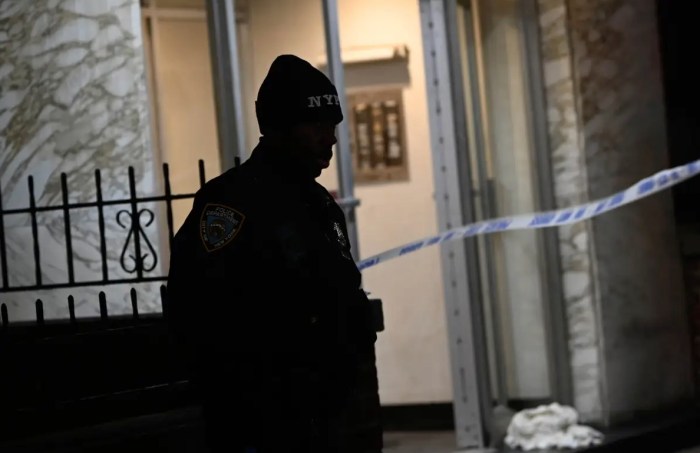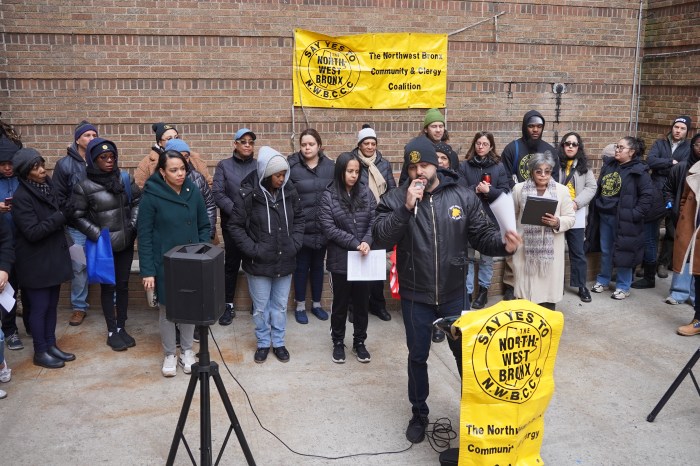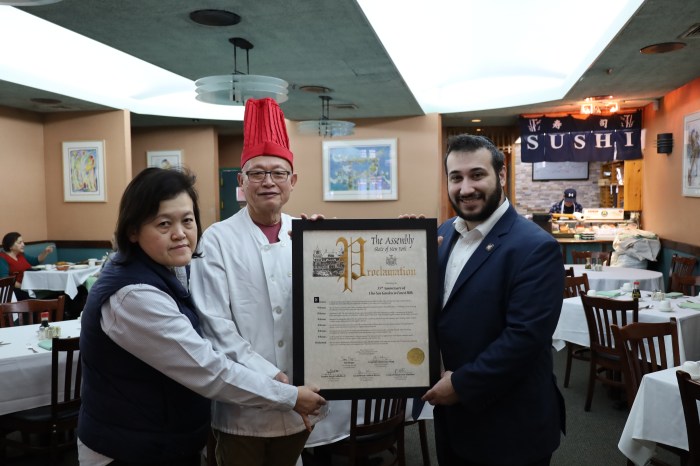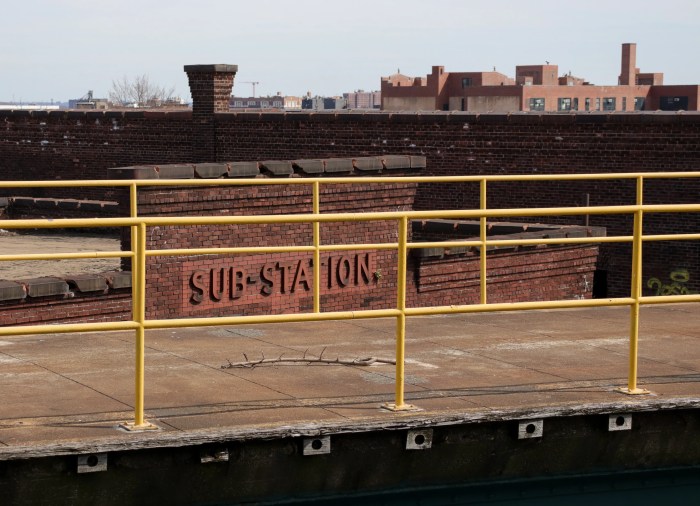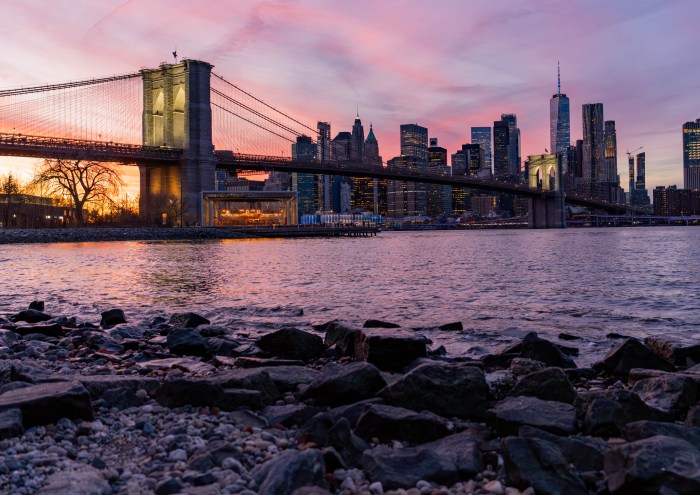New York’s most famous lady is celebrating her birthday on Friday and, even at 130, she hasn’t lost her luster.
Whether she’s the punchline for a joke between the presidential candidates, as she was during last week’s Alfred E. Smith Memorial Foundation Dinner at the Waldorf Astoria, or is the topic of an elementary school history project, the Statue of Liberty still generates a huge buzz as a symbol of America, just as her creators intended.
Although the Statue of Liberty opened to the masses on Oct. 28, 1886, its origins date back much earlier in the 19th century. French political expert Edouard de Laboulaye first proposed the idea for a monument that celebrated the long-standing relationship between his country and the United States in 1865.
The reunification of America after the Civil War reaffirmed his passion for democracy and progressive movements. Sculptor Frederic Auguste Bartholdi shared his countryman’s enthusiasm for the monument and began sketching plans in 1870 for the statue dubbed “Liberty Enlightening the World.”
Designing woman
The statue would resemble the Roman image of Liberty that was prominent on coins and historic U.S. locations including on Washington D.C. buildings. Bartholdi made the 151-foot tall Lady Liberty hold a tablet inscribed with the date “JULY IV MDCCLXXVI” to commemorate the nation’s birth date and had her stand atop broken chains, which are partially obscured by her robes, to symbolize America’s post-Civil War reconstruction.
The sculptor took several trips to the U.S. during his design process and came upon Bedloe’s Island, located southwest of the Manhattan coast. The island had been home to Fort Wood, a star-shaped army base used in the early 19th century, and Bartholdi pictured his creation rising from the star-shaped building, visible to everyone who sailed through New York’s waters.
The project was officially commissioned in 1875 with an agreement that France would pay for the copper statue and the U.S. would pay for the pedestal. While committees on both coasts worked to raise money, Bartholdi got to work, starting with the right arm and torch.
They were brought to Philadelphia in 1876 for centennial celebrations, then moved to Madison Square Park, where they remained for six years before being returned to France. The exhibitions excited Americans about the monument and helped to raise money for the project.
Bartholdi displayed the statue’s head at the Paris World’s Fair in 1878. Work continued for years as the sculptor planned to build the monument in France and have it shipped to New York.
Fundraising on the American side turned out to be a bit problematic, as Congress rejected proposals to pay for the 154-foot pedestal. Media owner Joseph Pulitzer stepped in with a successful drive to raise $100,000, and 125,000 New Yorkers chipped in – many paying less than a dollar. Poet Emma Lazarus also helped with the fundraising by composing “The New Colossus,” which chronicled the immigrant experience.
Welcome to New York
In 1885 construction on the pedestal began, while the completed statue was shipped to New York by a barge in 350 individual pieces and packed in 214 crates.
After the pedestal work was completed in April 1886, workers reassembled the statue in four months time. President Grover Cleveland commemorated the statue’s opening with a gala opening.
Thousands of dignitaries from France and the U.S. cheered their new attraction, which became an immediate hit. Whether climbing up to the statue’s crown, or its torch – which was open to the public until 1916 – visitors took in the views of New York harbor and skyline.
The statue served as an inspiration to the millions of immigrants who sailed to Ellis Island during the late 19th and early 20th centuries.
Life in the city
Decades of wear and tear took a toll on the Statue of Liberty, which was in danger of structural failures. But once again, the public came to the rescue. In 1982, President Ronald Reagan created the Statue of Liberty-Ellis Island Centennial Commission to raise money for a renovation in time for the statue’s 100th birthday.
The private public partnership, led by then-Chrysler chairman Lee A. Iacocca, raised more than $350 million for the spruce job, which commenced in 1984. For nearly two years, crews worked to fill cracks, remove soot and tar, and make other refurbishments.
The biggest change was the installation of a new torch made out of 24 carat gold.
Another celebration was held July Fourth weekend of 1986 to celebrate the statue’s reopening, reigniting the monument’s popularity for a new generation.
After the 9/11 attacks, Liberty Island was closed to the public for nearly eight years out of safety concerns. Added security measures meant that only 20 percent of people could go into the statue during a visit.
In 2011, the statue was closed for nearly two years due to another upgrade to stairs, elevators and other facilities and then superstorm Sandy, which hit in the fall of 2012, wrecked Liberty Island’s infrastructure.
Despite those setbacks, crowds have continued to flock to the island, with 4.3 million annual visitors, according to the National Park Service. In fact, she’s still the talk of the town.
At the Smith charity dinner, Clinton remarked how the statue is seen as an optimistic symbol of hope to most people, except her opponent.
“Donald looks at the Statue of Liberty and sees a 4. Maybe a 5, if she loses the torch and tablet and changes her hair,” she said.
In three years, Lady Liberty will make the news again, sharing space with another attraction: a 26,000-square-foot museum.
In October, the National Park Service, Statue of Liberty-Ellis Island Foundation and a host of dignitaries broke ground on the museum, which will be located on the west side of the island. When the museum opens in 2019, it will contain several relics related to the statue’s history, including the original torch.




